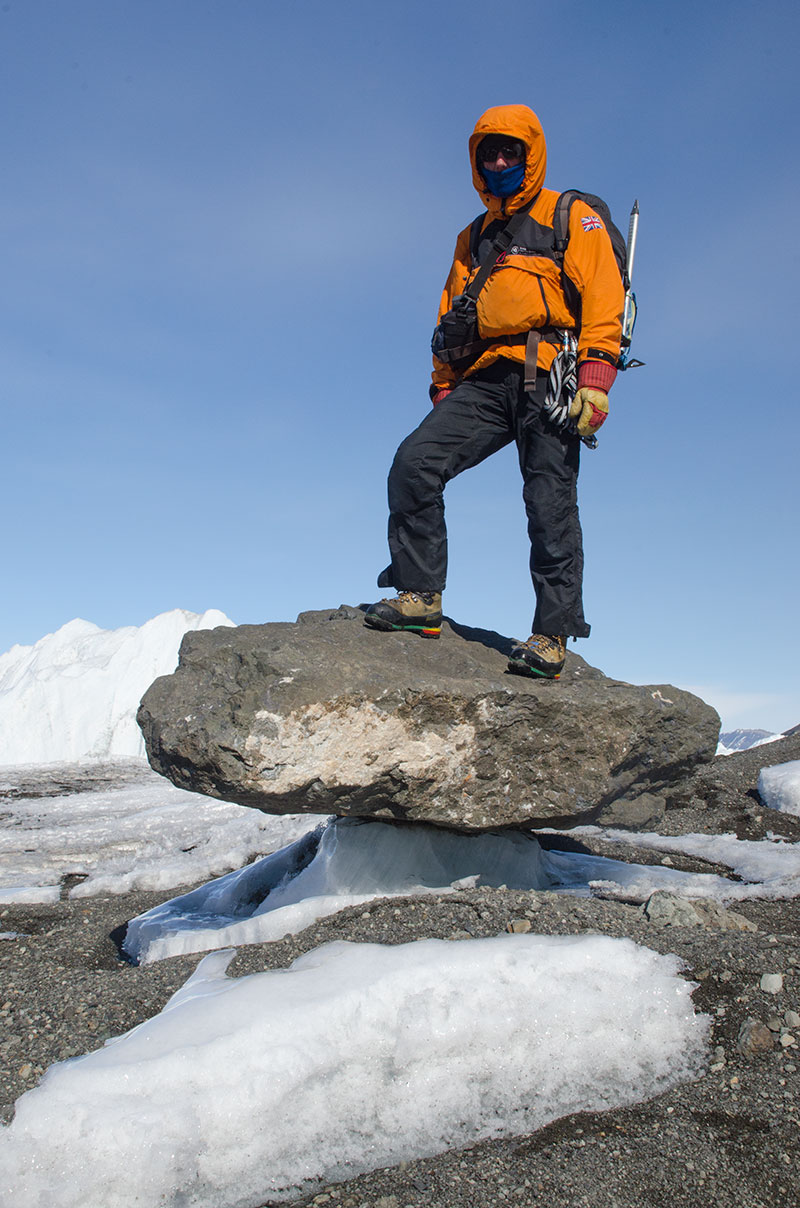George VI Ice Shelf: moraine featuresThe western edge of the ice shelf has a series of unusual debris ridges, an "ice-shelf moraine", which we studied in detail. The moraine comprises irregular ice-cored ridges of debris originating from both Palmer Land and locally. Especially noteworthy are granite erratics transported from a large ice stream opposite, Bertram Glacier in Palmer Land, right across the ice shelf. Moraine formation is linked to melting out of basal ice that was incorporated within the ice-marginal foliation. |
 General view of the widest part of the ice-shelf moraine, looking NNE towards the distant mountains of Palmer Land. |  Bethan Davies standing next to a 4 metre-long gneiss boulder near Moutonnée Lake. This boulder was transported across the ice shelf from Palmer Land. |  Ice-shelf moraine, showing sharp ridge crest, near Ablation Lake. The sediment (diamicton) is emerging from a thin vertical debris layer parallel to foliation, and forms a veneer less than a metre thick at the surface. |  Prominent ridge in the ice shelf-moraine just south of Moutonnée Lake. Note also melt-pool and moderately dipping foliation in the ice beyond. |
 Ice-shelf moraine at Ablation Point, showing stacking of several debris layers as a result of localized thrusting. |  A bench with outer moraine ridge indicates that the ice shelf reached a significantly higher level in the past. |  Typical sediment in the ice-shelf moraine: diamicton, a poorly sorted sediment with clasts up to boulder size and a silty matrix. |  A large angular granite erratic near Ablation Lake. Originating from Palmer Land, this block may have been transported englacially or supraglacially. |
 Ice cliff near Ablation Lake, showing the debris layers that represent the source of the moraine material. |  A large granite boulder from Palmer Land has slid down the moraine onto the frozen surface of a pond. |  A large granite-gneiss boulder from Palmer Land showing a rusty veneer (iron oxide) indicative of chemical weathering. |  Well sorted sand on the surface of George VI Ice Shelf near Ablation Lake. This represents aeolian sediment that has been reworked by a supraglacial stream. |
 Glacier table formed where a boulder has protected the underlying ice from ablation. This example occurs at the bed of a drained supraglacial lake near Moutonnée Lake. |  A chemical precipitate (gypsum?) resulting from the weathering of mudstone within the ice-shelf moraine. |  In an older ice-shelf moraine, this granite boulder near Ablation Lake has been split in two by frost action. | |
| Photos Michael Hambrey, November and December 2012. |